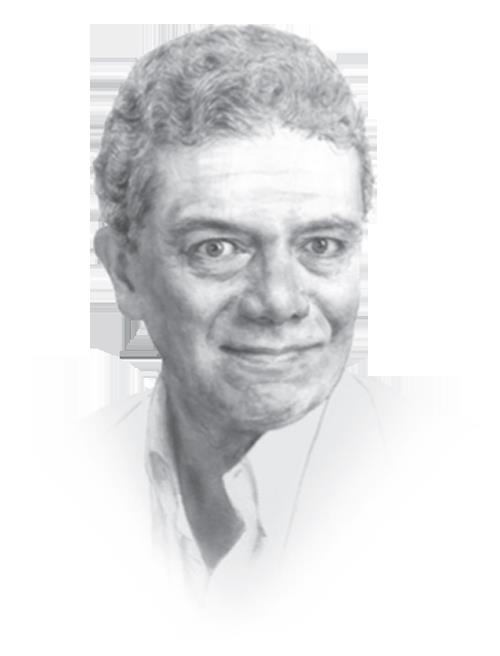
Iran is experiencing another political earthquake, following the death in police custody last week of a 22-year-old woman, Mahsa Amini. It is important to point out that the fault lines are clear in Iran: On one side is a theocratic regime and its suppressive forces; on the other, the Iranian people. The people have risen up once again against the theocratic regime, which has brought them nothing but misery for more than four decades.
This week alone, Iran entered its second week of massive nationwide protests. Meanwhile, Iranian Americans showed up in huge numbers to protest against the presence of the country’s president, Ebrahim Raisi, at the UN General Assembly in New York. All signs point to the advent of a historic sea change in Iran and it behooves the international community to respond in kind.
Amini was violently arrested on Sept. 13 by officers from the regime’s so-called “morality police” for not properly adhering to the clerical regime’s laws on head coverings for women. She was severely beaten, fell into a coma and died three days later. This was the spark that ignited a huge powder keg of pent-up social disenchantment resulting from state suppression, the violation of women’s rights, rampant poverty, spiraling living costs, a rock-bottom economy, and a palpable lack of prospects for a decent future for the growing ranks of the younger generations.
The protests started in western Iran, Mahsa’s primary residence, almost immediately when the news of her death broke. By the third day, the uprising began to bleed into neighboring provinces and beyond, including the outskirts of the capital, Tehran. By the fourth day, people in Tehran itself, Rasht in the north, Khorramabad in the south and Mashhad in the east had risen up, showcasing a striking geographical and demographic mosaic of dissent. The lightning pace of the expansion of the uprising is perhaps the best indication yet of the general attitude in the country toward the despised ruling clerics. In just six days, the uprising engulfed at least 100 cities across all 30 Iranian provinces.
According to the New York Times: “The demonstrations have become widespread, with demands broadening to reflect ordinary Iranians’ anger over their living conditions … with extraordinary scenes of dissent and calls to end the Islamic Republic.”There were a number of common characteristics in all of these protests: The prominent presence of women and youth, who in most cases led the charge in clashes against the regime’s suppressive forces; the unifying chants of “Death to the dictator” and “Death to Khamenei,” the regime’s embattled supreme leader; the bravery of the protesters in pushing back against the agents of the regime and calling for its overthrow; the burning and destruction of the regime’s posters, its suppressive equipment, offices and other symbols; and the organized nature of these acts of protest.
Dozens of people are believed to have been killed so far. Thousands more reportedly have been arrested. Still, the protests have not stopped. The regime’s top officials have been, once again, quick to point the finger of blame at their main opposition, the National Council of Resistance of Iran, for organizing the protests.
On Sept. 20, Mohammed Baqer Qalibaf, the regime’s parliamentary speaker, said during a televised speech in Majlis: “The enemy … seeks to cause chaos in the country … Our dear people are not going to side with the hypocrites (a pejorative term for the opposition).”
Meanwhile, in New York on Wednesday thousands of Iranian Americans turned out in force and stood outside the UN headquarters in the city to protest against the presence of Raisi at the General Assembly. Known to them as the “Butcher of Tehran,” Raisi served as a member of the regime’s so-called Death Commission in 1988 that was responsible for the massacre of at least 30,000 political prisoners.
Literally at the same time as Raisi’s goons were brutally killing protesters on the streets of Iran, Raisi was using the podium afforded to him by the world body to lecture the international community about democracy and human rights. If that is not enough for the international community to lower its head in shame, what is?
In a video message to the protest rally in New York, the president-elect of the NCRI, Maryam Rajavi, rightly pointed out: “All governments should predicate their relations with the mullahs’ regime on a halt to the executions, to the suppression and killing of protesters, and to the destruction of the regime’s terrorism machine and hostage-taking.”
Kira Rudik, leader of the Voice of Ukraine Party, told the crowd at the rally: “We are here to support each other as the free nations of Ukraine and Iran. People of free Iran, during these seven months there were tough times when we didn’t know if there was hope. During these times, I told myself what Mrs. Rajavi told me: ‘We can and we must.’”
It is time for the international community to hear the cries of the Iranian people, from Tehran to New York. The people of Iran and their organized opposition can bring down the theocratic and misogynist regime sitting in Tehran. That outcome will give way to a secular, democratic and non-nuclear Iran that respects human rights and is a friend of free peoples everywhere.
• Dr. Majid Rafizadeh is a Harvard-educated Iranian-American political scientist. Twitter: @Dr_Rafizadeh









